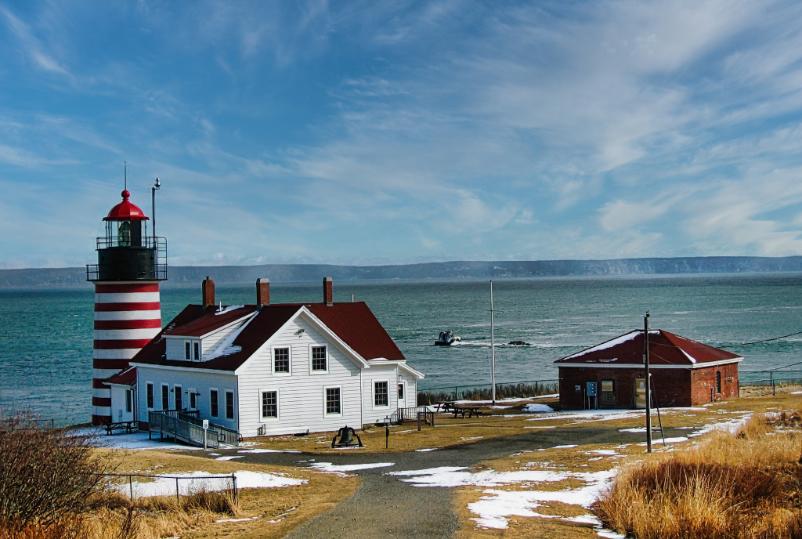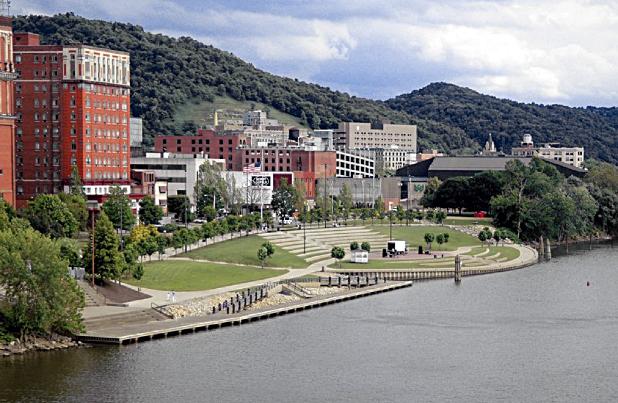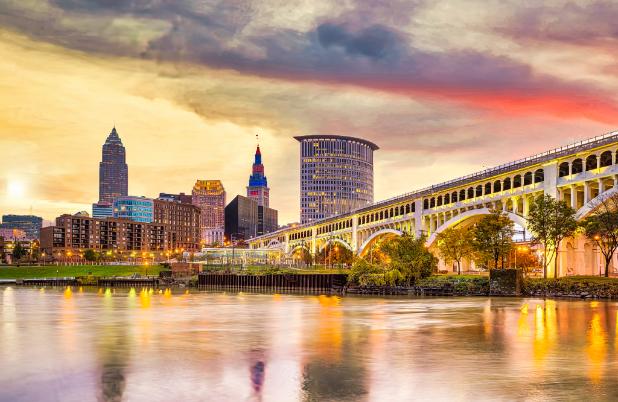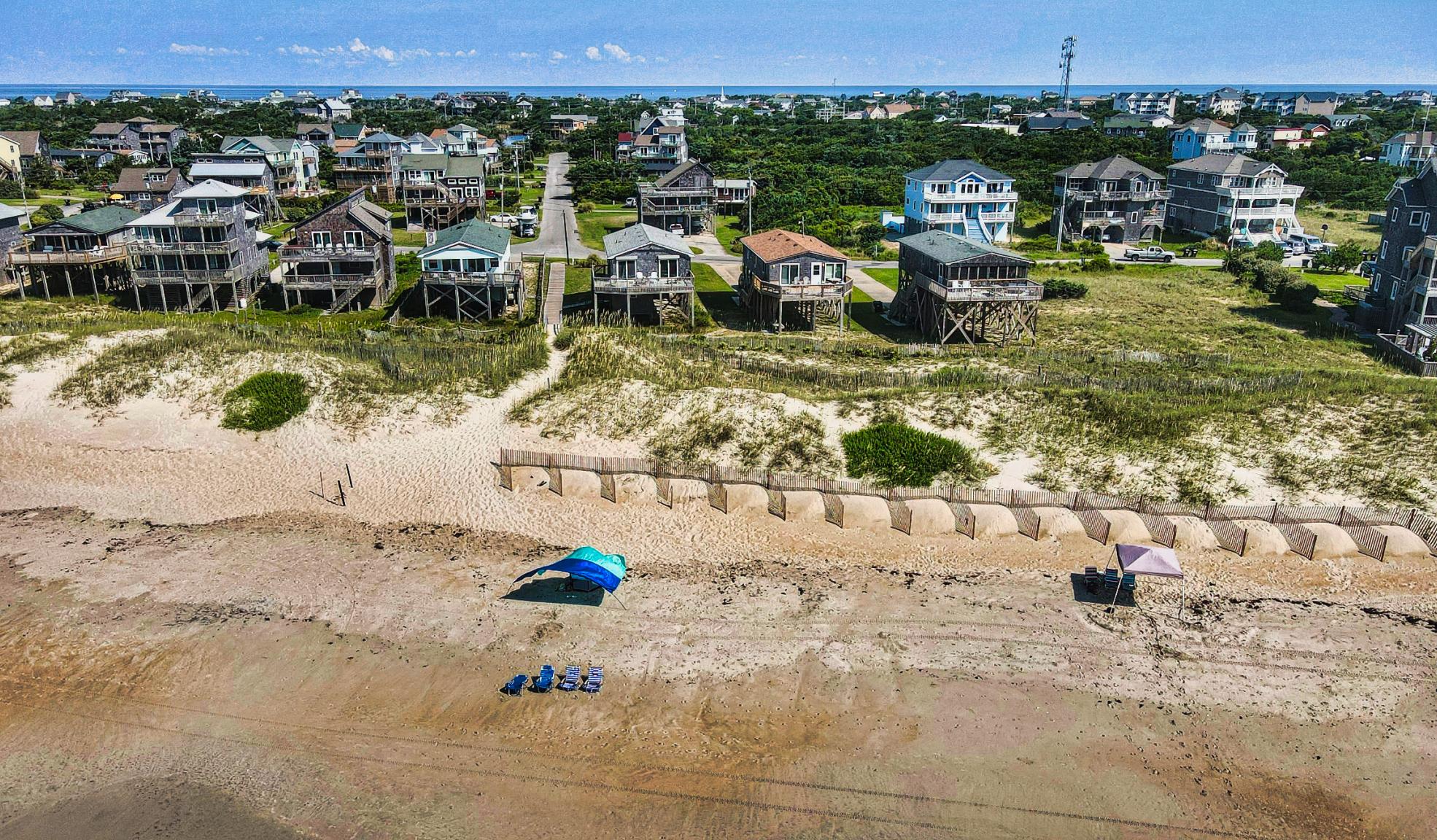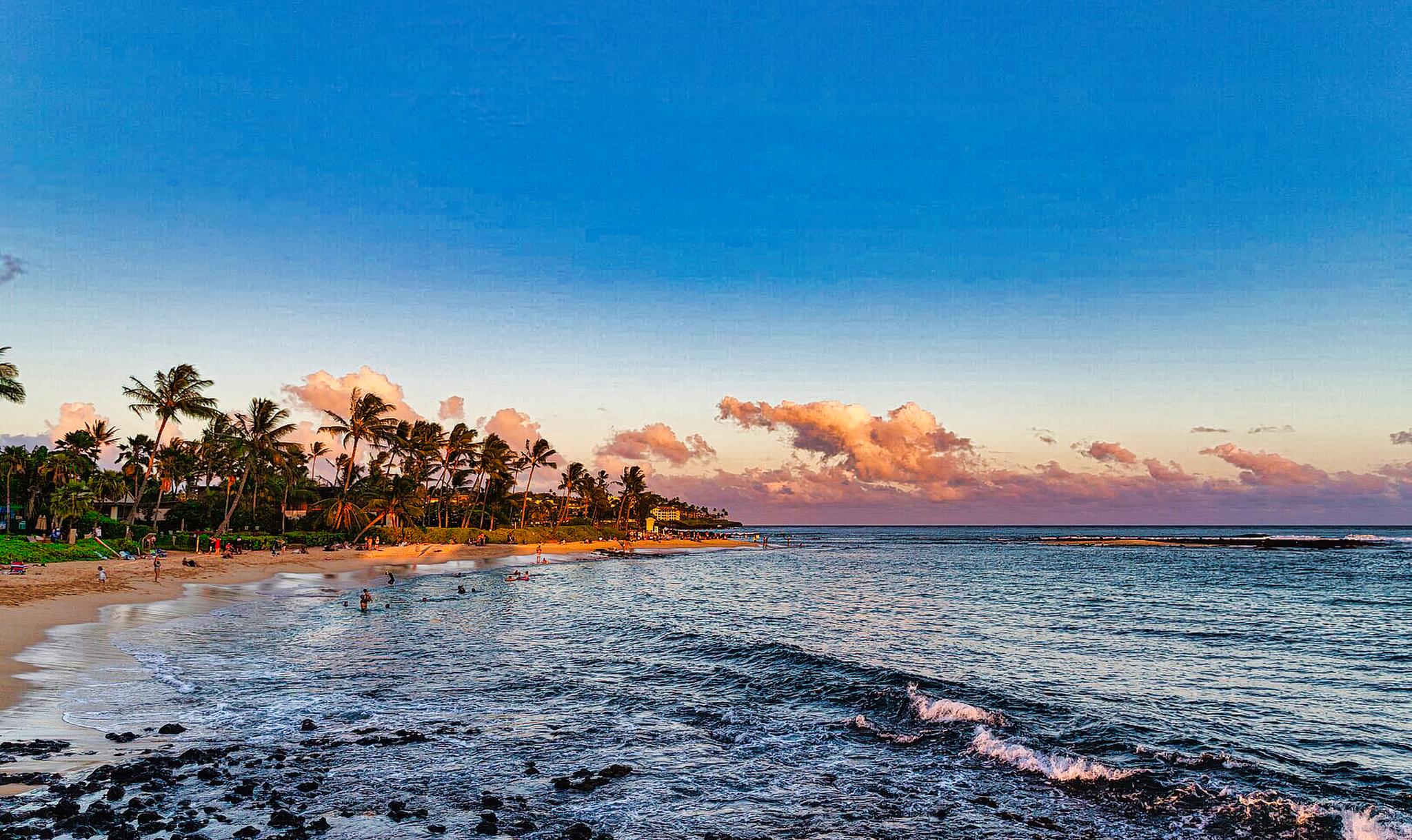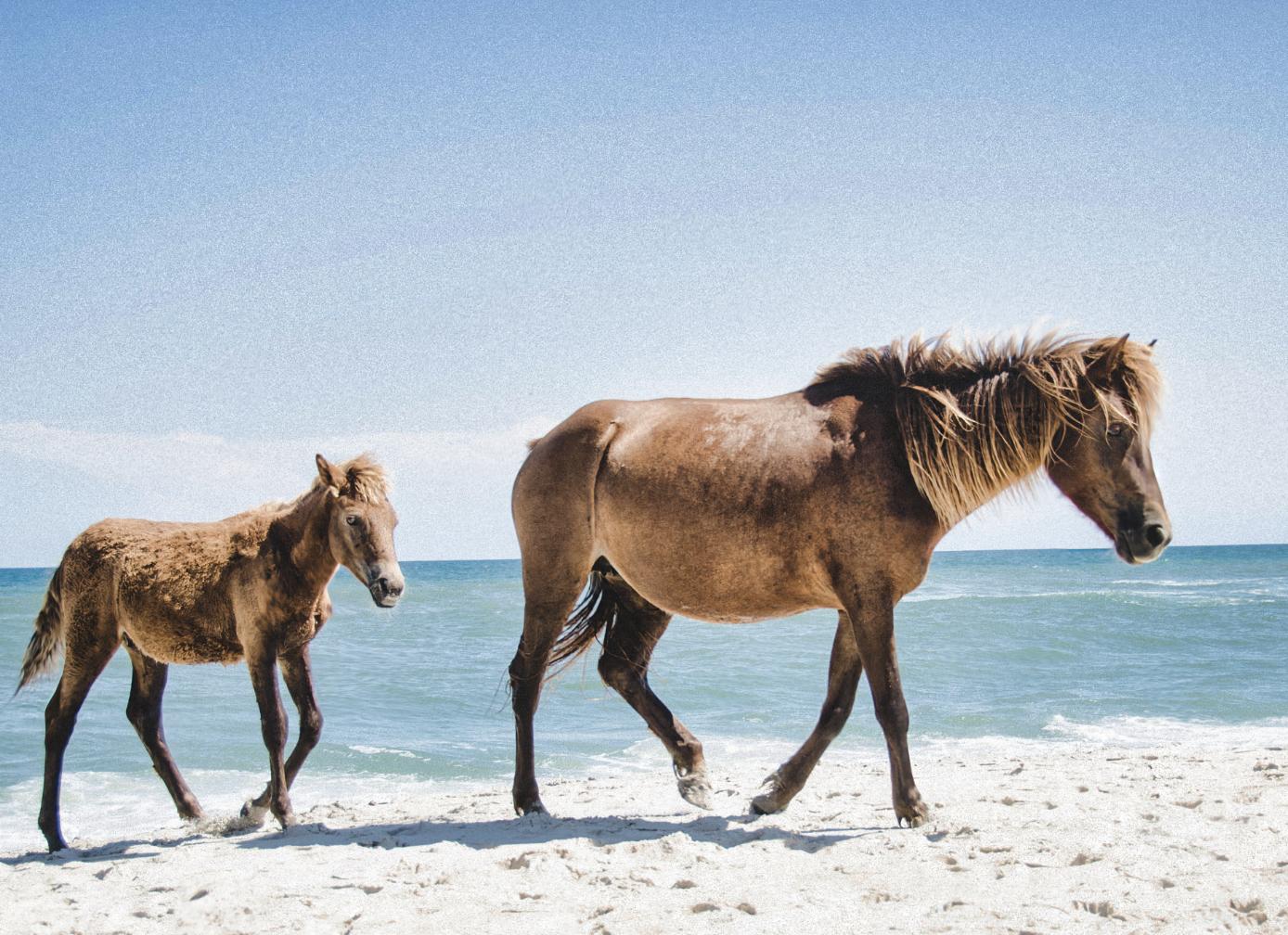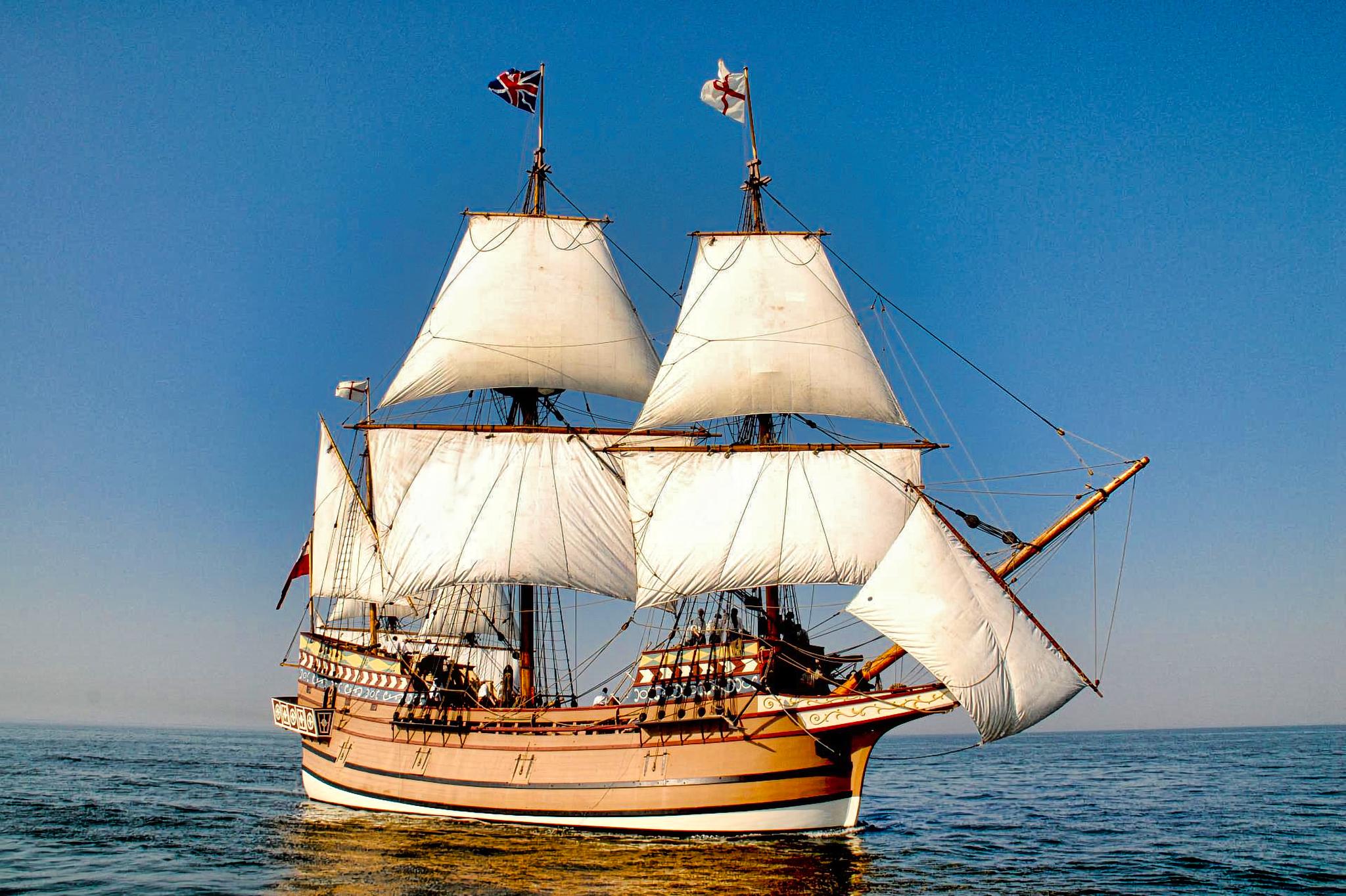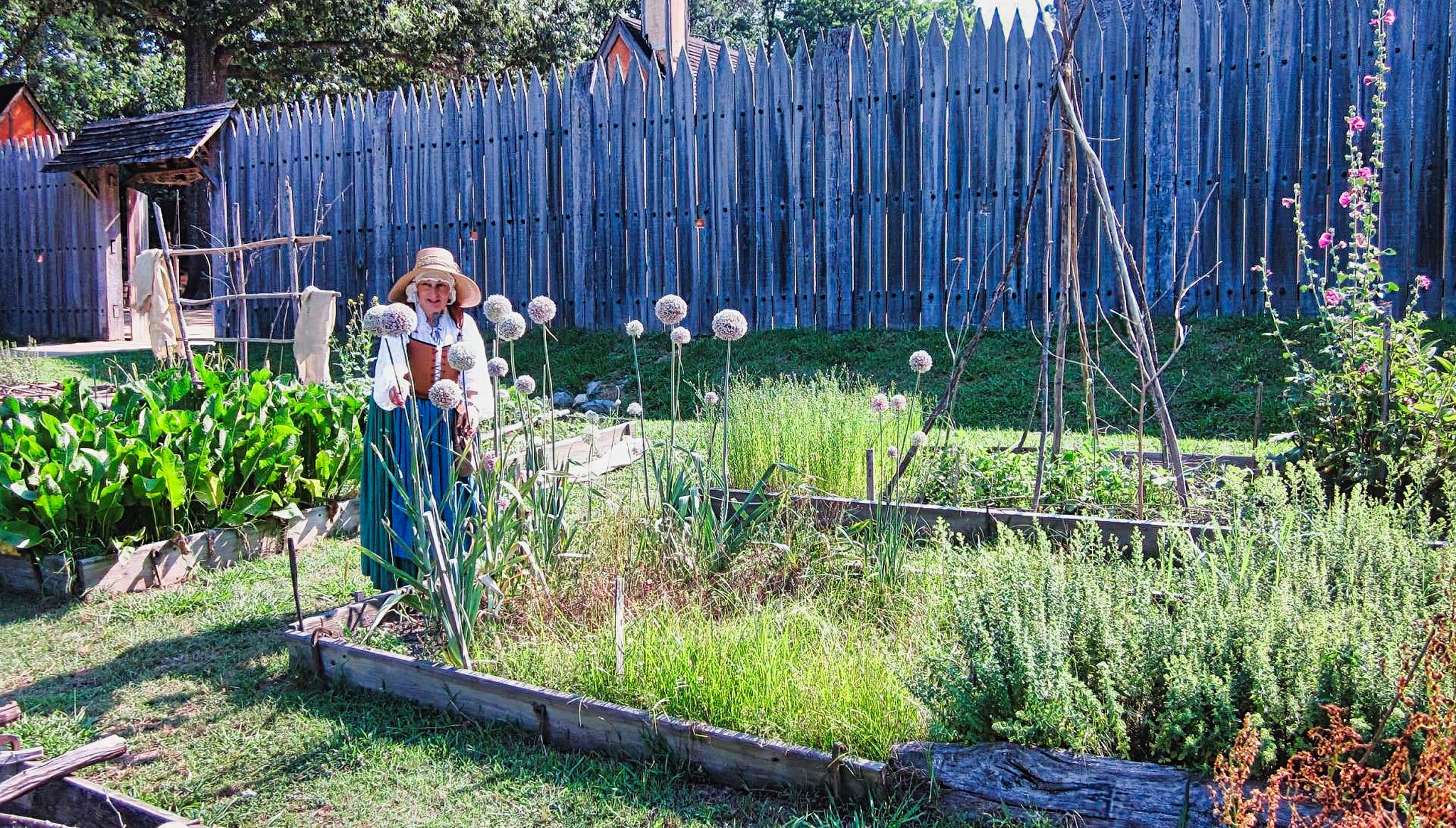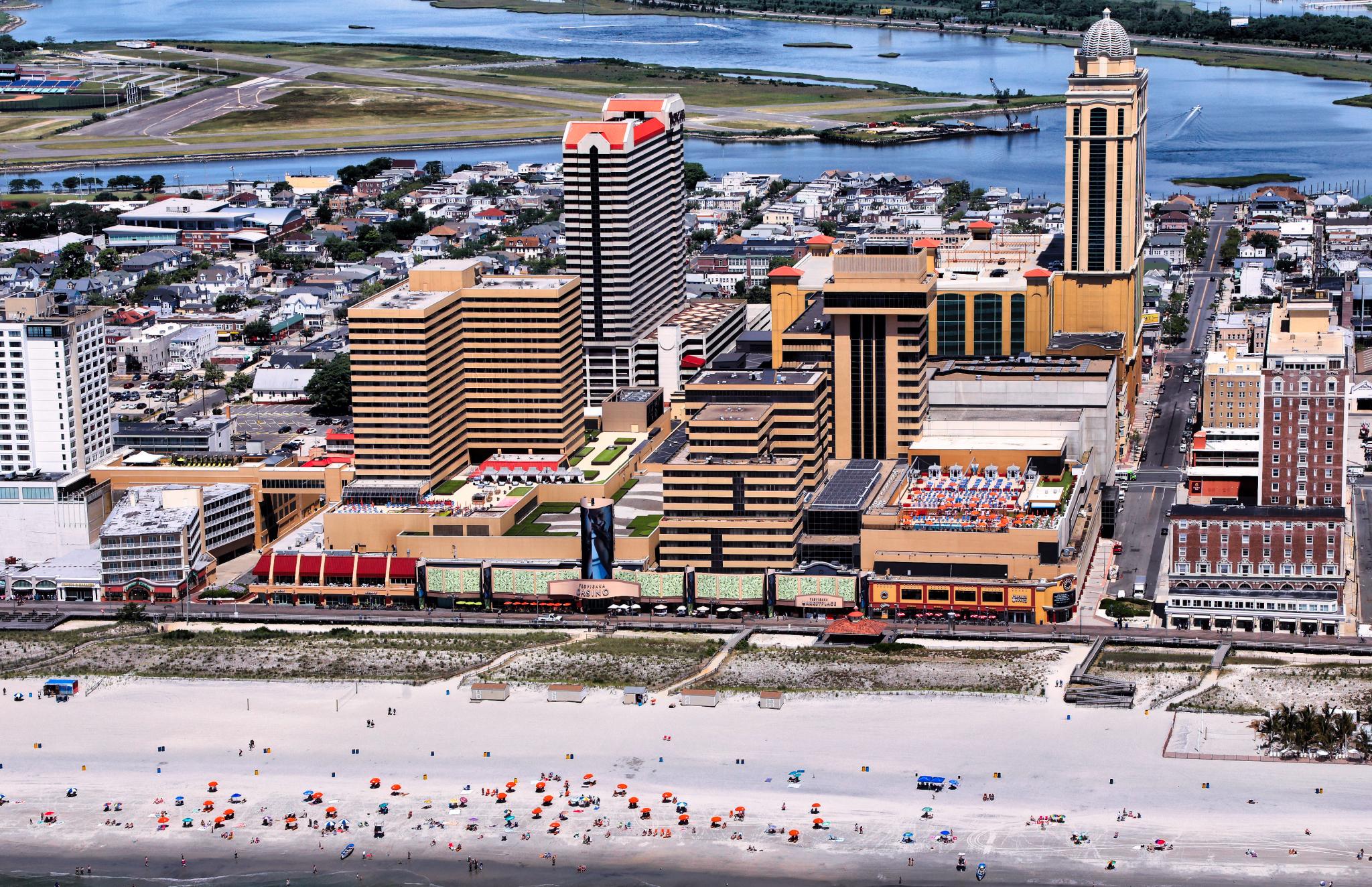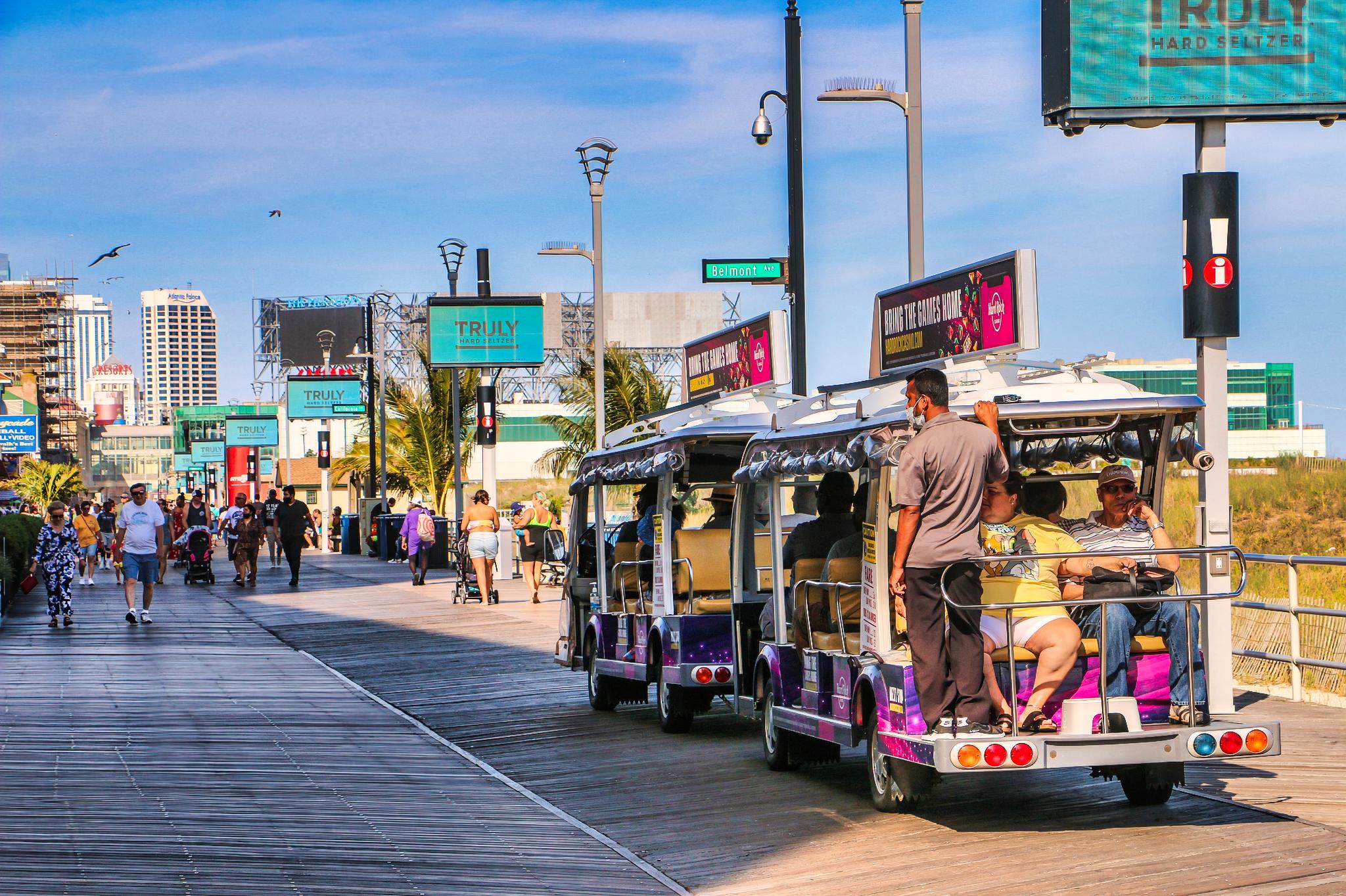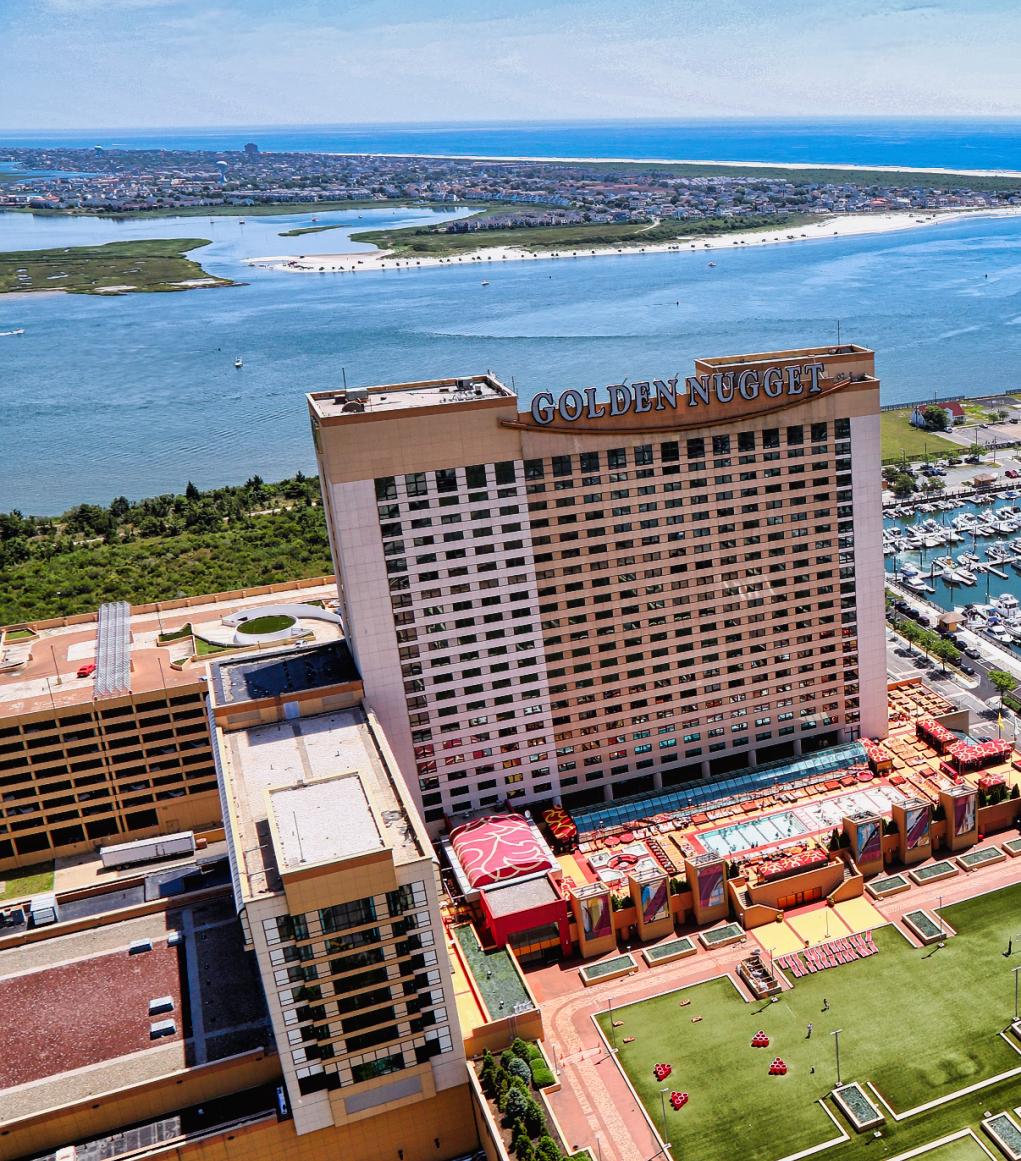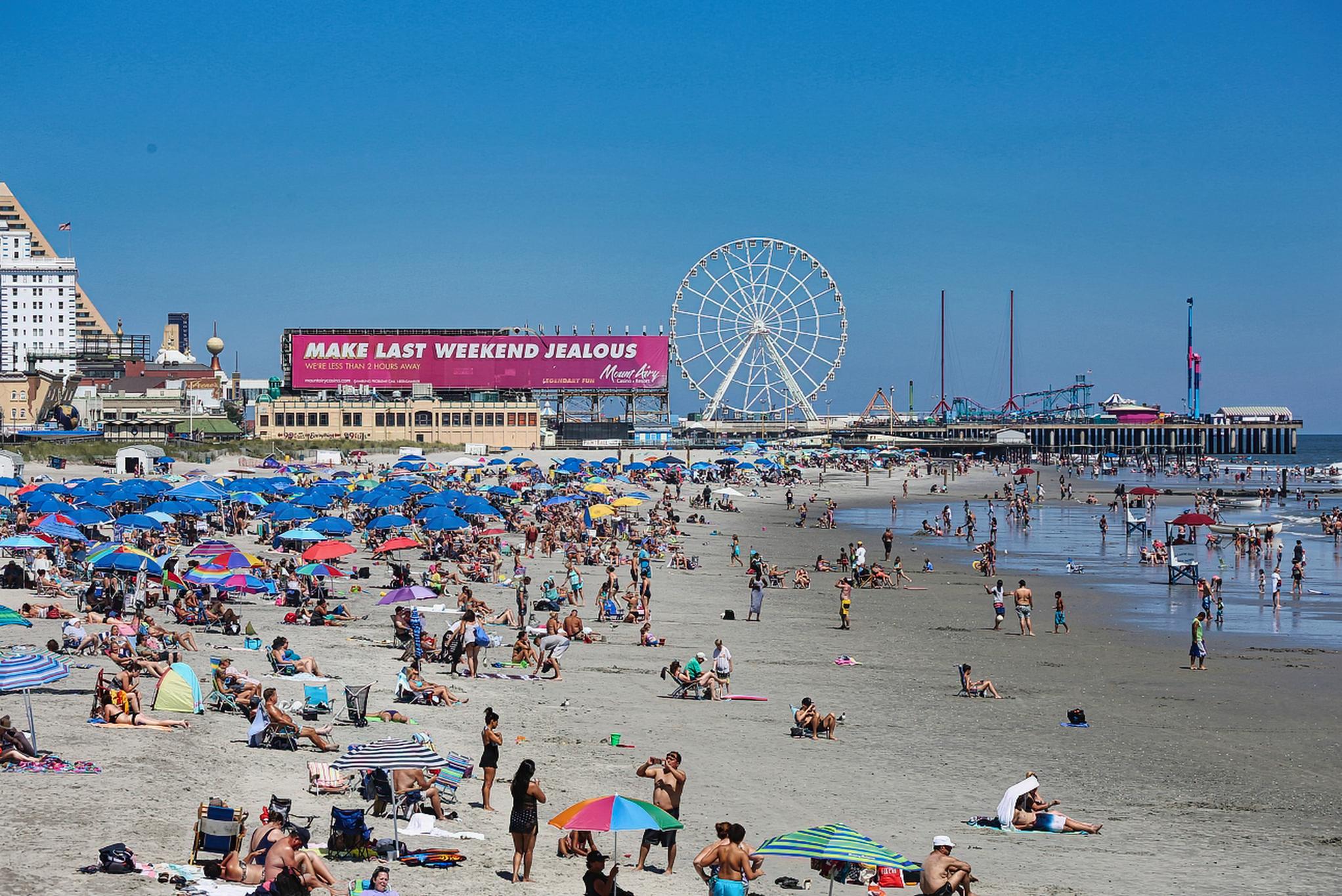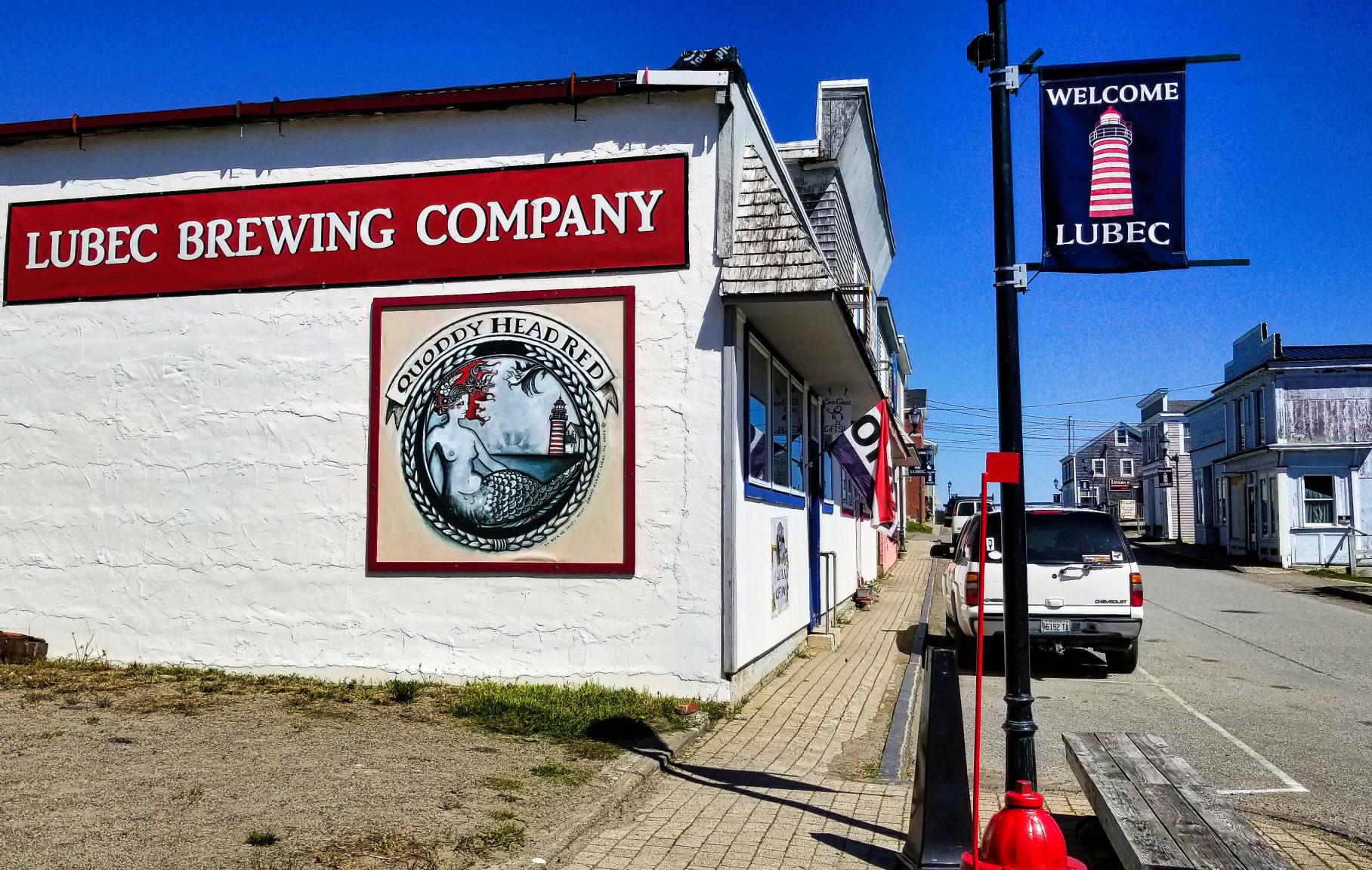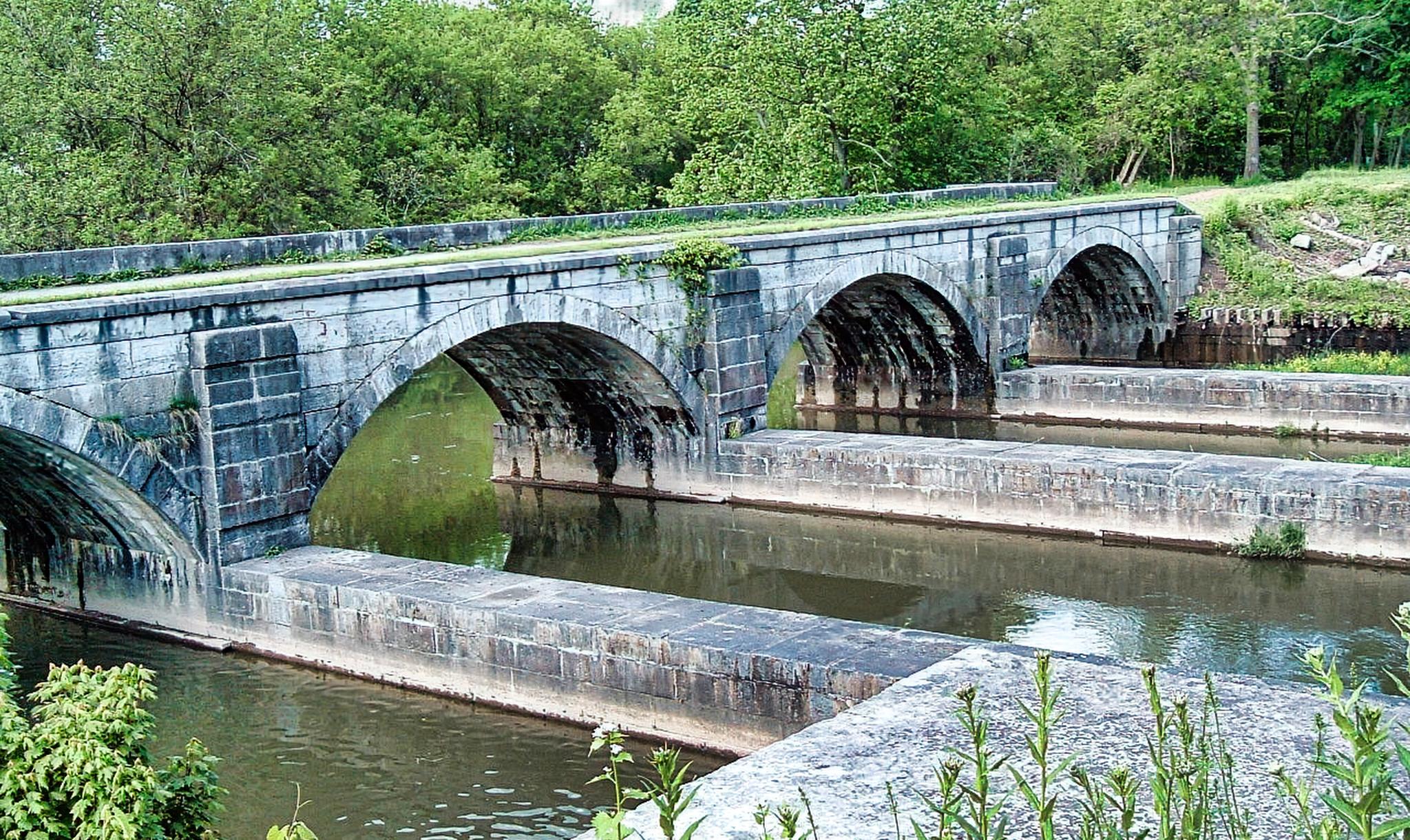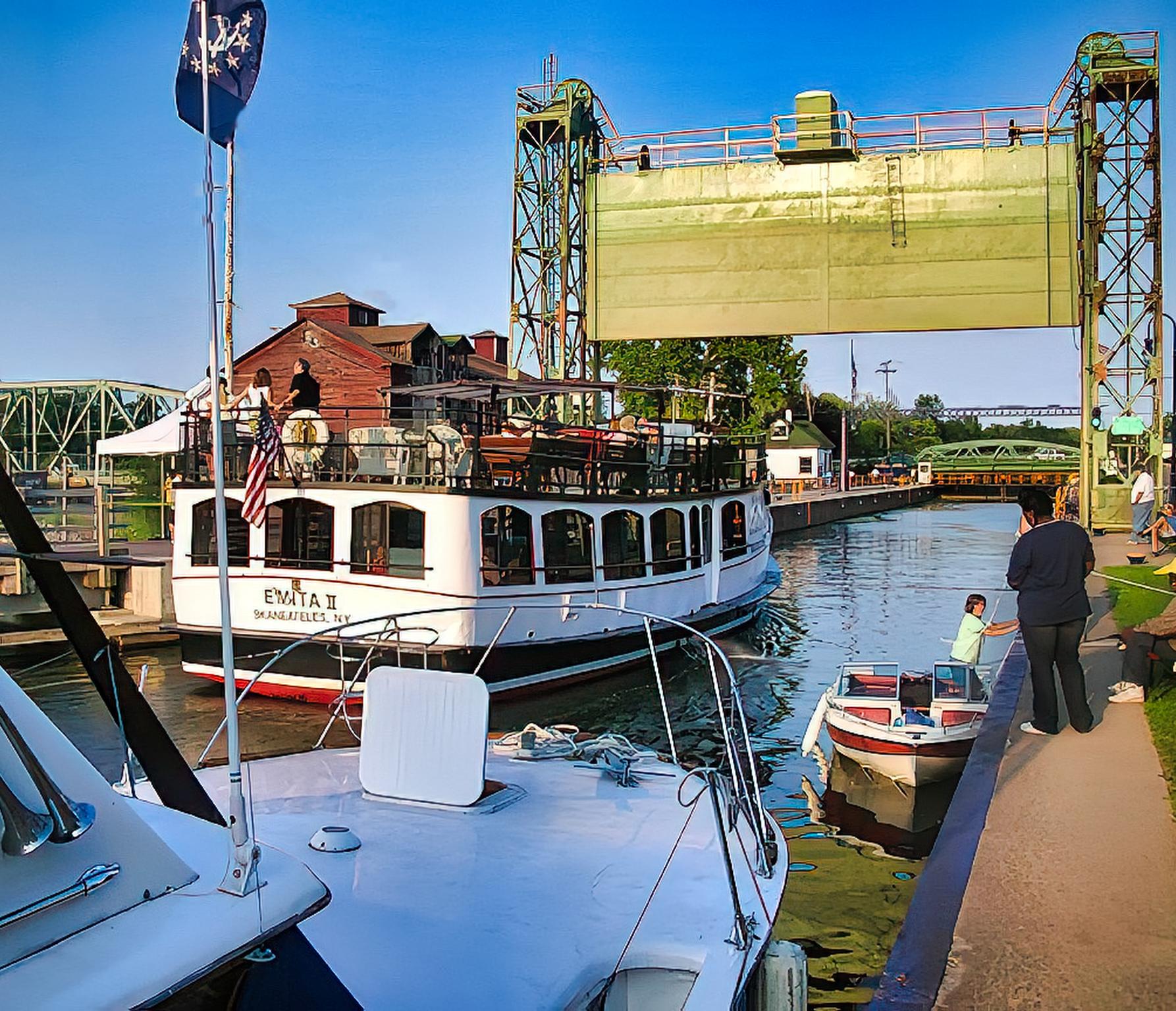Bandon Beach, Oregon: Sea Stacks and Solitude
BandonBeach, locatedonthe southernOregoncoast,is aplaceof dramaticseastacks,rugged cliffs,and secludedcoves.Thebeaches hereare wild andwindswept,offeringasense of solitudeandconnectionwithnature.
Thetownof Bandonexudes a charming,small-townatmosphere, with localrestaurants serving upfresh seafood andcraftbeer.Thearea’s naturalbeautyandlaid-back vibe makeitaperfectdestination for those seeking apeacefulretreat.Thesea stacks arehometo many seabirds, makingitabirder's paradise.
Tucked along thebanks of theJames River in coastalVirginia,theJamestownSettlementis morethan adestination —it’s thecradleof EnglishAmerica. For visitors today,itoffers arare chanceto walk in thefootsteps of explorers, visionaries, and survivors wholaidthefirstpermanent Englishroots in theNewWorldover 400years ago.
Withimmersiveexhibits, livinghistoryexperiences, and nearby attractions steepedincolonialcharm, Jamestown is amust-stopalongthebyways of American heritage.
A Landmark in American History
In 1607, 104 English men and boys arrived aboard the Susan Constant, Godspeed, and Discovery, anchoring near what is now Williamsburg. They named their fledgling colony “Jamestown” in honor of King James I. Life was anything but easy. Starvation, disease, and conflict with the native Powhatan people nearly ended the settlement before it began. Yet Jamestown persevered, becoming the first permanent English settlement in NorthAmerica.
Byways 22
This earlycolony laidthegroundworkfor democratic governance,economicenterprise,andcultural exchange—sometimes peaceful,often painful. From theestablishmentof thefirstrepresentativelegislative assemblyin 1619 tothearrivalof thefirstdocumented Africans inEnglishAmerica,Jamestownis wherekey chapters of theAmerican storybegan.
Living History at the Jamestown Settlement Museum
Today, visitors to Jamestown can explore the Jamestown Settlement, a living history museum operated by the Jamestown-Yorktown Foundation. The site includes a state-of-the-art indoor museum featuring rare artifacts, multimedia exhibits, and interpretive displays that bring 17th-century Virginia to life.
Guests can step aboard replicas of the original ships, wander through a reconstructed Powhatan village, and explore a recreated 1610s English fort complete with costumed interpreters demonstrating everything from blacksmithing to musket firing.
Across theroad lies HistoricJamestown,the originalarchaeologicalsitemanagedbythe NationalPark ServiceandPreservation Virginia. Here, thestory becomes evenmore tangible.Archaeologists continuetouncover theremnants of theoriginalfortandtown, whiletheonsiteArchaeariummuseum showcases thousands of artifacts—fromarmor to medicaltools—thatrevealtheeverydaylife and struggles of thefirstsettlers.
More Than Just a History Lesson
While Jamestown is a destination rich in historical significance, it’s also an engaging and family-friendly experience. Kids can help plant crops at the Powhatan village, practice lifting a musket, or ask questions of historical interpreters dressed in period attire.
The immersive exhibits invite participation, and the surrounding natural beauty — lush woods, tidal wetlands, and views of the James River — makes for a scenic and relaxing visit.
For photographers, themixof recreated17th-century structures, preserved ruins,andnaturalbackdrops offers compelling visuals.Andfor thosewholove stories, Jamestown’s layeredpast—fromCaptain JohnSmithand Pocahontas totobaccoplantations and
internationaltrade—offers endless narratives to explore.
Nearby Attractions: A Historic Triangle
Jamestown is part of Virginia’s renowned Historic Triangle, along with Colonial Williamsburg and Yorktown. Just minutes away by car is Colonial Williamsburg, a living history museum that recreates life in the 18th century, complete with horse-drawn carriages, period taverns, and costumed townsfolk going about their daily tasks.
TotheeastliesYorktown Battlefield,whereAmerican independencewas wonduringthefinalmajor battleof theRevolutionaryWar.Thesethreedestinations are connectedby theColonialParkway,ascenic23-mile drivethatwinds throughprotectedwoodlands and alongtheJames andYork Rivers.It’s oneof the prettiestdrives in thestateandaworthybywayin its ownright.
Alsonearby is BuschGardensWilliamsburg,a European-themed amusementpark,andWater Country USA, makingthis regionidealfor multigenerationaltravelor mixinghistorywith entertainment.
Local Flavor: Where to Eat
No trip is complete without sampling the local fare, and the Jamestown-Williamsburg area doesn’t disappoint. The region blends Southern comfort food, Chesapeake seafood, and colonial-era culinary influences.
TrytheJamestown PieCompany,knownfor its savory potpies and fruittarts,or theBlueTalon Bistro
Byways 24
inWilliamsburg, offering Frenchcomfortfood ina cozy setting. For riversideviews,headtoTheGabriel ArcherTavern near theWilliamsburgWinery,where you can enjoy crab cakes, artisansandwiches,and a glass ofVirginiawine.
Seafood lovers should ventureabitfarther totheYork River Oyster Company,whichserves upfreshlocal oysters and other catches inarelaxed,nauticalsetting. Anddon’tmiss thechancetotrypeanutsoup,a Virginiaclassicwithcolonialroots.
Best Time to Visit
Jamestown is a year-round destination, but the best time to visit is in the spring (April to early June) or fall (late September to November) when temperatures are pleasant and the foliage adds a burst of color to the landscape.
These seasons also tend to have fewer crowds, giving visitors a more personal experience at the museums and archaeological site.
Summers can behotandhumid,butthey’realso full of specialevents, reenactments,andkid-friendly activities thatmakeitalivelytimetoexplore.Winter sees fewer visitors, andwhilesomeoutdoor elements maybelimited, theindoor museums remainopenand fascinating.
Tips for Travelers
Visitors should plan at least a full day to take in both Jamestown Settlement and Historic Jamestown. Combo tickets and joint passes with Colonial Williamsburg or Yorktown are available and offer great value for multi-day stays.
Wear comfortableshoes, bringarefillablewater bottle,anddon’tforgetyour camera.TheJamestown areaalsohas severalcharmingbedandbreakfasts, boutiquehotels,andriversidelodges thatgiveyou a senseof stayingwithinhistory, notjustvisiting it.
Jamestown: The Journey Begins Here
For anyone tracing the routes ofAmerica’s past, Jamestown is where the journey truly begins. It’s a place that invites reflection, offers education through engagement, and connects us to stories still unfolding today.
Whether you’re a history enthusiast, a curious traveler, or simply seeking a scenic getaway with meaning, Jamestown promises a journey well worth taking.
https://www.jyfmuseums.org/homet
Nestled on Canada's ruggedeasterncoast,Nova Scotia, meaning "New Scotland,”is a peninsulasteeped inmaritimehistory,vibrant culture, and breathtaking naturalbeauty.
Fromtheworld's highesttides intheBayof Fundyto theCabotTrail's dramatichighlandvistas,andfrom thehistoricstreets of Halifaxtothecharmingfishing villages dotting its coastline,this provinceoffers a uniqueand unforgettabletravelexperience.
Whether you'reahistorybuff,anoutdoor enthusiast, a culinary adventurer, or simplyseekingascenic escape, NovaScotiapromises ajourneyrichin discoveryand warmhospitality.
A Land Shaped by the Sea and Centuries
Nova Scotia's story is inextricably linked to the Atlantic Ocean. Long before European arrival, the Mi'kmaq people, the Indigenous inhabitants of the region, lived in harmony with the land and sea for
thousands of years, their rich culture and traditions still resonating today.
The early 17th century saw the arrival of French settlers who established Port-Royal, one of the earliest European settlements in NorthAmerica. This marked the beginning ofAcadia, a French colony that would see decades of conflict between the French and British for control of this strategically important territory.
The British eventually gained control, leading to the tragic Great Upheaval, the expulsion of theAcadians, a poignant chapter in Nova Scotia's past that continues to shape its cultural identity. The influence of Scottish, Irish, and English settlers further enriched the province's cultural tapestry, creating a unique blend of traditions, music, and dialects.
Evidence of this layered history is found throughout the province, from fortified towns to historic lighthouses standing sentinel over windswept shores.
Halifax: A Historic Port City with a Modern Beat
No visit to Nova Scotia is complete without exploring its vibrant capital, Halifax. This historic port city, founded in 1749, boasts a stunning natural harbour that has played a pivotal role in Canadian and NorthAtlantic history.
Awalk along the Halifax Waterfront is a journey through time, with beautifully restored 19th-century stone warehouses now housing artisan shops, galleries, and bustling restaurants. The iconic Halifax Citadel National Historic Site, a star-shaped fort perched atop Citadel Hill, offers panoramic views of the city and harbour, along with a glimpse into its military past through reenactments and exhibits.
Delve deeper into the city's maritime heritage at the Maritime Museum of theAtlantic, where you can
learn about theAge of Sail, naval battles, and Halifax's crucial role during wartime, including its connection to the Titanic disaster.
For art lovers, theArt Gallery of Nova Scotia showcases a vast collection of regional, national, and international art, including the uniquely charming folk art of Maud Lewis.
The Legendary Cabot Trail: A Journey Through Highlands and Coastal Splendor
For many, the Cabot Trail on Cape Breton Island is the crown jewel of Nova Scotia's scenic drives. This world-renowned roadway, nearly 300 kilometers long, winds its way through the spectacular Cape Breton Highlands National Park, offering breathtaking vistas at every turn.
Imagine dramatic cliffs plunging into the azure waters of the Gulf of St. Lawrence, lush green valleys carved by ancient glaciers, and pristine beaches inviting a moment of quiet contemplation.
The trail is not just about the views; it's an immersive experience. Quaint fishing villages like Ingonish and Chéticamp offer welcoming harbors and opportunities to experienceAcadian and Gaelic cultures. Hiking trails abound, catering to all skill
Byways 30
levels, leading to hidden waterfalls, panoramic lookouts, and encounters with diverse wildlife, including moose, bald eagles, and numerous seabird species.
Don't miss the chance to enjoy a traditional ceilidh (a Gaelic social gathering with music and dancing) or indulge in fresh seafood at a local eatery along the way.
The Mighty Bay of Fundy: Witnessing Nature's Raw Power
Prepare to be awestruck by the Bay of Fundy, home to the highest tides on Earth. Twice a day, over 160 billion tonnes of seawater flow in and out of this massive bay, creating a tidal range that can exceed 16 meters (52 feet) in some areas. This phenomenal natural spectacle has sculpted a dramatic coastline of towering cliffs, sea stacks, and expansive mudflats.
At Hopewell Rocks, you can walk on the ocean floor at low tide among the iconic "flowerpot rocks" and then kayak around them just a few hours later as the tide rushes back in.
The Fundy region also offers incredible whale watching opportunities, with fin, minke, and humpback whales frequently sighted. Explore charming towns likeAnnapolis Royal, one of Canada’s oldest settlements, or discover the rich fossil record at Joggins Fossil Cliffs, a UNESCO World Heritage Site where you can see evidence of life from 300 million years ago.
Charming Towns and Coastal Villages: A Slower Pace of Life
Beyond the major attractions, Nova Scotia's soul resides in its countless charming towns and picturesque fishing villages.
Lunenburg, another UNESCO World Heritage Site, is a postcard-perfect example of a British colonial settlement, its brightly coloured wooden houses and narrow streets evoking a bygone era. Home to the famed schooner Bluenose II, Lunenburg’s waterfront is a bustling hub of activity.
Explore Mahone Bay with its iconic three churches reflected in the calm waters, or discover the artistic
haven of Peggy's Cove, where the historic lighthouse stands guard over massive granite boulders, a photographer's delight (though always be mindful of the powerful ocean waves).
Each village offers its own unique charm, from the Acadian fishing villages along the French Shore to the tranquil coves of the Eastern Shore.
Museums and Cultural Sites: Voices from the Past
Nova Scotia's rich history and diverse cultural heritage are proudly displayed in its many excellent museums and cultural sites. Beyond the Halifax Citadel and the Maritime Museum of theAtlantic, consider a visit to the Fortress of Louisbourg National Historic Site on Cape Breton Island.
This meticulously reconstructed 18th-century French fortified town offers an unparalleled immersive historical experience, with costumed interpreters bringing the past to life. The Grand-Pré National Historic Site commemorates theAcadian settlement and their subsequent deportation, a deeply moving and important site.
For those interested in the province's Scottish roots, the Hector Heritage Quay in Pictou tells the story of the Ship Hector, which brought the first wave of Scottish settlers to Nova Scotia in 1773. The Black Cultural Centre for Nova Scotia in Cherry Brook
Byways 32
preserves and promotes the rich history and culture ofAfrican Nova Scotians.
A Taste of Nova Scotia: A Culinary Journey
No exploration of Nova Scotia is complete without indulging in its delicious local cuisine, heavily influenced by the bounty of the sea and its agricultural traditions. Fresh seafood is, of course, a highlight.
Savour succulent lobster, enjoyed boiled, in a roll, or creamy chowder. Dig into plump Digby scallops, world-renowned for their flavour. Enjoy fresh oysters, mussels, and haddock prepared in countless delicious ways.
Beyond seafood, Nova Scotia offers a burgeoning wine industry, particularly in theAnnapolis Valley, where vineyards produce award-winning white and sparkling wines. Sample locally crafted beers and ciders, and don't miss trying traditional dishes like rappie pie (anAcadian potato dish), Solomon Gundy (pickled herring), and blueberry grunt (a delightful dumpling dessert).
Farmers' markets across the province are a great place to sample local produce, baked goods, and artisanal products.
Your Nova Scotia Adventure Awaits
From the moment you arrive, Nova Scotia captivates with its stunning landscapes, its rich and often poignant history, and the genuine warmth of its people.
It’s a place where you can feel the powerful rhythm of the ocean, trace the footsteps of history, and create lasting memories. Whether you're seeking adventure, relaxation, or a deeper connection with culture and nature, Nova Scotia extends a heartfelt "Céad Míle Fáilte" – a hundred thousand welcomes. Pack your bags and prepare to be enchanted by Canada's ocean playground.
For more information on Nova Scotia, go to: https://novascotia.com
AtlanticCity, New Jersey, is aplacewhere nostalgiaand novelty walkhandinhandalong theiconicBoardwalk. It’s thekindof destinationthatoncehelpeddefineAmerica’s vacation culture— and itcontinues toevolve, attracting afresh waveof visitors whocomenotjust for thegaming tables butfor thebeaches,history, entertainment, and thetasteof saltwater taffymingled withgourmetcuisine.
A Brief History of Boardwalk Beginnings
Atlantic City’s story began in the mid-19th century when it was envisioned as a seaside health resort. With the completion of the Camden andAtlantic Railroad in 1854, the city was suddenly accessible to Philadelphia’s urbanites seeking sea breezes and beach therapy. The world’s first boardwalk was laid in 1870, intended to keep sand out of hotel lobbies, and it quickly became the city’s trademark.
By the early 20th century,Atlantic City was booming, synonymous with glitz, showgirls, and
Byways 36
pageantry. It famously became the birthplace of the MissAmerica Pageant in 1921, and the 1920s and ‘30s sawAtlantic City at the peak of its glamor. The city’s appeal waned in the mid-20th century, but the legalization of casino gaming in 1978 revived its fortunes, ushering in a new era of tourism that continues to shape its skyline today.
The Boardwalk: America’s Original Promenade
TheAtlantic City Boardwalk remains a star attraction. Stretching over four miles, it invites visitors to stroll, bike, or hop on rolling chairs — those iconic hand-pushed transports unique to the city.Along the way, you’ll find shops, eateries, arcades, amusements, and entertainers offering a vibrant carnival-like atmosphere.
Historic landmarks dot the Boardwalk, including the Entrance to the Stars outside Jim Whelan Boardwalk Hall, where celebrity handprints are immortalized in cement. Steel Pier, originally opened in 1898, has been revitalized and is now a family-friendly amusement park hovering over the ocean, offering everything from thrill rides to helicopter tours.
Gaming, Entertainment, and High Stakes Thrills
Atlantic City’s casino industry remains a major draw. Resorts like Borgata, Caesars, Tropicana, and Hard Rock provide full-service experiences with table games, slots, sportsbooks, and upscale accommodations. Each offers a unique ambiance, from the Old World Roman flair of Caesars to the modern luxury of Borgata.
Beyond gaming, these resorts feature world-class entertainment. Headliners likeAlicia Keys, Jerry Seinfeld, and Kevin Hart frequently perform in Atlantic City. Live music lounges, comedy clubs, and dazzling production shows make sure the energy doesn’t stop when the dice are down.
Museums and Cultural Discoveries
Atlantic City’s cultural scene is often overlooked, but those who take the time to explore find rewarding experiences. TheAtlantic City Historical Museum, now part of the Jim Whelan Boardwalk Hall, tells the story of the city’s rise, fall, and rebirth through photos, artifacts, and video exhibits.
Another must-see is theAfricanAmerican Heritage Museum of Southern New Jersey, which offers a compelling look atAfricanAmerican culture, with a strong emphasis on contributions to local history. Also worth a visit is the NoyesArts Garage, a hidden gem that showcases local artists and hosts pop-up exhibits and events year-round.
For a bit of kitsch, the Ripley’s Believe It or Not! Odditorium offers quirky fun with strange artifacts and mind-bending illusions right on the Boardwalk.
Savoring Atlantic City’s Culinary Scene
Atlantic City’s dining scene has grown well beyond Boardwalk fries and saltwater taffy, though both are still worth indulging in. Today, it’s a foodie destination where upscale dining and local flavor blend in delicious harmony.
Celebrity chefs have left their mark: Gordon Ramsay’s Hell’s Kitchen and Bobby Flay Steak offer high-end options inside casinos. Dock’s Oyster House, a city staple since 1897, is beloved for its
Byways 38
fresh seafood and classic charm. Knife & Fork Inn, another historic institution, offers refined dining with a touch of old-school class.
In the heart of the city, the Ducktown neighborhood —Atlantic City’s “Little Italy”— serves up hearty, authentic meals at places likeAngeloni’s II and Tony’s Baltimore Grill, a no-frills local favorite
famous for its pizza and late-night crowd.
If you’re looking for a quick bite with personality, White House Sub Shop is the place for oversized, meat-packed hoagies that have fed everyone from Sinatra to Springsteen.
Beaches, Boating, and Beyond
Atlantic City’s wide, sandy beaches are free to access, no beach tags required, and offer a perfect retreat on summer days. Whether you’re building sandcastles, parasailing over the surf, or simply catching rays, the beach remains one of the city’s most beloved assets.
Just off the beach, theAtlantic CityAquarium in nearby Gardner’s Basin provides marine life exhibits and touch tanks for kids, plus scenic views of the back bays. Boat tours and fishing charters also operate from the basin, offering a quieter, naturecentric side of the city.
For shoppers, the Tanger Outlets “The Walk” spans several city blocks and features brand-name bargains within walking distance of most major hotels and casinos.
Best Time to Visit
Summer is prime time inAtlantic City. From June throughAugust, the beaches are bustling, Boardwalk performers are in full swing, and the city’s calendar overflows with concerts and festivals.
Events like theAtlantic CityAirshow in August and the Food & Wine Festival in July draw big crowds and high energy.
Spring and fall, however, offer milder weather and fewer crowds, ideal for those who want to explore the Boardwalk, dine al fresco, or take in a show without long lines or peak-season pricing. Winter has its own charm, with casino resorts offering indoor entertainment and seasonal events, but beachgoers will want to wait for warmer months.
A City that Reimagines Itself
Atlantic City is a place that’s constantly rewriting its own story. From its roots as
Byways 40
a Victorian-era health retreat to a high-stakes gaming hub and now a destination for foodies, culture seekers, and beach lovers, the city remains compelling.
Whether you’re sipping a cocktail overlooking the ocean, spinning a roulette wheel, or reliving history along the Boardwalk,Atlantic City offers something few places can: a layered experience that feels both exciting and familiar.
A Shore Bet
Atlantic City isn’t just a gambling town or a beach town — it’s a uniquely American story of resilience, reinvention, and revelry. For travelers seeking a dynamic destination with a mix of sun, style, and stories,Atlantic City remains a shore bet.
https://www.visitatlanticcity. com
Perched ontheruggededgeof coastalMaine, Lubecis atown thatfeels likethelaststop beforetheworld ends — or begins.Itis,after all, theeasternmosttownin thecontiguous UnitedStates, wherethefirstrays of themorningsunbrushacross lighthouses and rockyshores.
But Lubec is more than a geographical footnote. It’s a place of natural beauty, maritime history, and small-town charm that invites travelers to slow down, breathe in the saltyAtlantic air, and discover a side of Maine often overlooked by the tour buses headed to Bar Harbor.
Founded in the early 1800s, Lubec was once a bustling hub of sardine canneries and smokehouses. The town’s waterfront was filled with the noise of industry and the scent of herring being prepared for shipment across the Northeast.At its peak, more than 20 canneries lined the harbor, and the economy hummed with maritime vitality.
Today, the canneries are gone, but their legacy remains in the town’s historic structures and the strong connection residents still feel to the sea. The
Byways 44
Lubec Historical Society Museum, housed in a quaint red schoolhouse, offers a glimpse into this storied past through vintage photographs, fishing gear, and tales of the town’s boom years. Walking the harborfront, it’s easy to imagine what it must have looked and sounded like during its heyday.
West Quoddy Head Lighthouse: Beacon of the East
Established in 1808, the lighthouse in Lubec, Maine marks the easternmost point of the continental U.S. and stands watch over the treacherous waters of the Quoddy Narrows.
Novisitto Lubecis completewithoutastop atthe iconicWestQuoddyHeadLighthouse.With its redand-whitecandycanestripes anddramaticperchon theedgeof thecontinent,this is oneof Maine’s most photographed landmarks –and for goodreason.
Visitors canexplorethelighthousegrounds and visit thesmallbutinformativevisitor center, whichdetails thehistory of maritimenavigationintheregion.
For thosewith abitof energy,trails windthrough Quoddy Head StatePark, offeringcliffsidewalks with breathtaking views of theBayof Fundyandthewild, wave-battered coastline.
Nature’s Rhythms and Ocean Life
Lubec is a paradise for lovers of unspoiled nature. The dramatic tides of the Bay of Fundy — some of the highest in the world, create a constantly changing seascape. Beaches emerge and disappear, coves fill and empty, and tidal flats teem with marine life.
Whale-watching tours depart regularly from the harbor, offering the chance to see humpbacks, minkes, and even the occasional fin whale during summer months. Seals, porpoises, and bald eagles are frequent companions along the way. Those with binoculars will find birding hotspots throughout the region, especially during the spring and fall migrations.
Nearby, the Cobscook Shores trail network offers dozens of miles of quiet, coastal hiking through forests and along the water’s edge. For more adventurous types, kayaking along the shoreline reveals hidden coves, sea arches, and a serene sense of remoteness that’s hard to find elsewhere in New England.
Campobello Island: A Presidential Retreat Across the Bridge
Just across the Roosevelt International Bridge from downtown Lubec lies Campobello Island, part of Canada’s New Brunswick province and home to the Roosevelt Campobello International Park. This unique bi-national site preserves the beloved summer retreat of President Franklin D. Roosevelt and his family. Roosevelt first visited the island as a boy and returned often throughout his life. The park’s centerpiece is the Roosevelt Cottage, a charming 34room home set on a bluff overlooking the bay. Visitors can tour the house, stroll the manicured grounds, and enjoy ranger-led talks about FDR’s time on the island and the significance of the U.S.-Canada partnership that maintains the park.
Travelers should bring a passport to cross the international bridge, but even a short afternoon visit is worth it for the serene views and the fascinating historical connections.
Downtown Delights and Local Flavors
Lubec’s small downtown offers a surprising array of shops, galleries, and eateries, all set against the backdrop of its picturesque harbor.
Locally owned boutiques sell handcrafted goods, nautical antiques, and Maine-made soaps and jams. Art galleries feature work by regional artists who draw inspiration from the sea and sky.
Dining in Lubec is all about fresh, local fare. Seafood is king, with lobster rolls, scallops, and fish chowders served in cozy restaurants and dockside shacks.
The innkeepers and restaurateurs here pride themselves on hospitality, and visitors often find themselves treated like family.
One standout is Cohill’s Inn, which overlooks the water and offers both lodging and dining. Their pub menu features hearty fare, local brews, and sunset views that seem to linger longer than they should.
Events, Festivals, and a Taste of Community
Lubec may be small, but it boasts a tight-knit community that knows how to celebrate. Summer brings the Lubec Summer Keys program, which offers world-class classical music performances and workshops in intimate settings around town. The weekly concerts, held in small churches and community halls, have gained national recognition and add a cultural flair to the coastal quiet.
TheFourth of July is another highlight,withparades, music, and fireworks thatlightuptheharbor. Throughouttheseason,visitors willalsofindfarmers markets, artfairs, andmaritime-themedfestivals that reflectthelocalheritageandseasonalrhythms.
When to Go and How to Get There
Lubecis mostvibrantfromlatespringthroughearly fall. July andAugustarepeakmonths,offeringwarm days,coolnights, andthefullspectrumof naturaland culturalattractions. September brings brilliantfall foliagewithoutthesummer crowds.
Getting thereis partof thecharm.Lubecis abouta three-hour drivefromBangor andcanbereachedvia U.S. Route1.Thefinalstretchtakes travelers through miles of forest, coastalmarshes,andglimpses of the
ocean–idealfor thosewhosavor thejourney as much as thedestination.Motorcoachgroups caneasily access thearea,withscenicstops alongtheway and ampleroomfor parking intownand near major attractions.
The Quiet Magic of the Eastern Edge
Lubecis thekindof placethatdoesn’tshoutfor attention –itwhispers,beckons,andrewards those whomaketheefforttoreachit.Thereareno amusementparks or high-riseresorts here,justwindwhippedcliffs, kindlocals,andanever-present soundtrackof waves andseabirds.
Whether you’rewalking thefoggyshorelineat sunrise, standingbesideahistoriclighthouse,or enjoyingabowlof clamchowder inaharbor café, Lubecoffers atimeless kindof travelexperience, onefilledwithbeauty,history,and soul.
Inaworldthat’s always rushing, Lubecstands still justlongenoughtoremindyouwhytheroad less traveledis oftenthemostrewarding.
https://www.visitlubecmaine.com
https://visitmaine.com
In1825, aboldideabecamearevolutionaryreality as theErieCanalopenedits gates andusheredina new eraof commerce, migration,andexpansion for theyoung United States.
Twocenturies later,theErieCanalis stillmaking waves, this timeas thecenterpieceof ayearlong bicentennialcelebration,culminatinginavibrant series of events this September inBuffalo,NewYork.
Fromgroundbreakingengineeringmarveltoenduring symbolofAmerican ambition,theErieCanal’s 200th anniversaryis morethan ahistoricalmilestone— it’s an invitation to exploreoneof thecountry’s most significantbyways andthecities thatgrew becauseof it.
A Canal That Built a Nation
When the Erie Canal officially opened on October 26, 1825, it was hailed as the “Eighth Wonder of the World”. Spanning 363 miles fromAlbany on the Hudson River to Buffalo on Lake Erie, the canal
Byways 48
linked theAtlantic Ocean to the Great Lakes, a feat that had never been accomplished in NorthAmerica.
Atthetime,PresidentJohnQuincyAdams declared theprojectoneof “thenoblestmonuments of civil engineering,”and rightlyso.Constructedwith rudimentarytools andthelabor of thousands of workers,including Irishimmigrants andlocal farmers, thecanalcutthroughdenseforests and ruggedterrain. Itfeatured83locks andnumerous aqueducts,allbuiltwithoutmodernmachinery.
Thecanalslashed shippingcosts bymorethan 90 percentandshortenedthetimeittookto movegoods fromweeks to days.Theeconomicboomthat followedtransformedNewYorkintotheEmpire State.Cities likeSyracuse,Rochester,andespecially Buffalo blossomedas tradehubs,whilethecanal served as agatewayfor westward migration. Thousands of settlers andentrepreneurs followedthe “liquidhighway”tonew lives in theexpanding Midwest.
Buffalo: Birthplace of a Boomtown
Buffalo, at the western terminus of the canal, owes much of its early growth and prosperity to the Erie Canal. What was once a sleepy village on the edge of Lake Erie exploded into a bustling industrial city seemingly overnight. Grain elevators, warehouses, and shipping docks lined the waterfront, and Buffalo soon became one of the busiest ports in the United States.
By themid-19th century,Buffalohademerged as a symbolof whatthecanalcoulddo—transform communities, igniteeconomies,andconnectthe coasts.Today, Buffalohonors thatlegacywith restored canal-erasites,museums,andpublicart installations thatcelebratethecity’s rich transportation and industrialhistory.
The 200th Anniversary Celebration: September in Buffalo Buffalo takes center stage this fall as the anchor for the canal’s bicentennial celebration.Afull calendar
of events is planned for late highlighted by
around the globe, the conference is expected to draw thousands of visitors.
Themainevent,however, is thevoyageof theSeneca Chief —areplicaof theoriginalpacketboatthat carriedGovernor DeWittClinton fromBuffaloto NewYorkCity intheinaugural“Weddingof the Waters”. OnSeptember 24,thenew SenecaChief will launchfromBuffalo’s Canalsideandbeginasymbolic journeyeastward,retracingthathistoricroute. Spectators canwatchtheboat’s sendoff and enjoy live music,historicreenactments,foodvendors,and fireworks along thewaterfront.
Alsoplanned aretemporaryexhibits attheBuffalo MaritimeCenter andthenew LongshedatCanalside, wheretheSenecaChief was painstakinglybuiltby hand.Walking tours of canal-eraarchitecture, storytelling sessions,and educationalprogramming for families willroundoutthemulti-daycelebration.
A Living Waterway
While much of the original Erie Canal route has been replaced by the modern New York State Canal System, the legacy of the Erie Canal continues to shape the region. In recent decades, towns and cities along the canal have revitalized their waterfronts, transforming former industrial spaces into parks, trails, and cultural destinations.
TheErieCanalway NationalHeritageCorridor, designated in2000, protects andpromotes this legacy. Stretchingacross morethan500miles of navigable waterway,thecorridor invites travelers tobike,boat, anddrivethrough alivingmuseumofAmerican history.Heritagefestivals,boatparades, and canalsideinns offer aone-of-a-kindjourney throughtime.
Why Travelers Should Go
For travelers who love discoveringAmerica’s hidden stories, the Erie Canal is a perfect fit. It’s a place where you can paddle a kayak beneath 19th-century stone aqueducts, tour charming canal towns like Fairport and Lockport, and dine at waterside taverns that once welcomed weary mule drivers.
In Buffalo,visitors can strollthe revitalized waterfrontatCanalside, exploretheErieCanalHarbor development, and enjoy thecity’s richmixof history, food,andarts. Thecity’s celebrated architecture–Frank LloydWrighthomes,Art Decolandmarks, andrestored warehouses – offers astriking visualnarrativeof its canal-driven past.
And,of course, thebicentennial celebration is ararechanceto witness history in motion.Whether you’retracing theoriginalroute, watching theSenecaChief setsail, or attending alectureattheWorld Canals Conference,there’s never been abetter timeto rediscover the ErieCanal.
What to Eat Along the Way
As with any greatAmerican road — or waterway — trip, the Erie Canal is lined with delicious stops. Buffalo’s culinary claims to fame go far beyond the famous wings.
Sample spicy beef sandwiches, sip locally brewed craft beer, and grab a scoop at one of the city’s award-winning ice cream shops.
Farther east,Rochester tempts withwhitehots (its ownstyleof hotdog),whileSyracuseoffers salt potatoes,aregionalspecialtyborn fromthecity’s salt industrythatonceusedcanaltransport.Farmers markets andsmall-towndiners dottheroute, providingatasteof upstatehospitality that’s as authenticas itis hearty.
Getting There
Buffalo is easily accessibleviaI-90,aroutethat parallels much of theoriginalcanal.TheNiagara FrontierTransportationAuthority(NFTA) also provides publictransitoptions throughoutthecity, and theBuffalo NiagaraInternationalAirportserves mostmajor airlines.
For thosewho wantto explorethe canalin depth, consider theErie CanalwayTrail, anearly continuous 360-miletrailidealfor bikingor walking. Many canaltowns offer rentalbikes, boats, and guidedtours.
An Invitation to Celebrate
At 200 years old, the Erie Canal remains a story of ambition, innovation, and enduring impact. The upcoming bicentennial isn’t just about celebrating the past, it’s about inspiring the future of travel, infrastructure, and community.
This fall,thebanks of Buffalo’s historicharbor willonceagainring withcelebration.And whether you
Byways 52
arrivebycar,motorcoach,bike,or by boat, theErie Canalwillwelcomeyou —justas itdidtwo centuries ago.
For moreinformation,visit: https://www.visitbuffaloniagara.com
Byways is published bi-monthlybyByways,Inc.and distributedelectronicallythroughoutNorthAmerica. Byways is emailed tomorethan5,000tour operators andTravelTrade. Subscriptions arecomplimentary. AniPad &iPhoneversion is availablefor consumers in theApp Store. AnAndroidbrowser versionis availableat www.issuu.com/byways.
Byways’distribution includes motorcoach companies, tour operators, selected travel agents, and other group
tour travel promoters. It is also available to consumers with an interest in North American travel. For advertising rates, editorial deadlines, or to place advertising insertions, contact: Byways Magazine at 540-233-1121.
©Copyright 2025 by Byways, Inc.All rights reserved. No portion of this publication may be duplicated in any form without express written permission of the publisher.






















